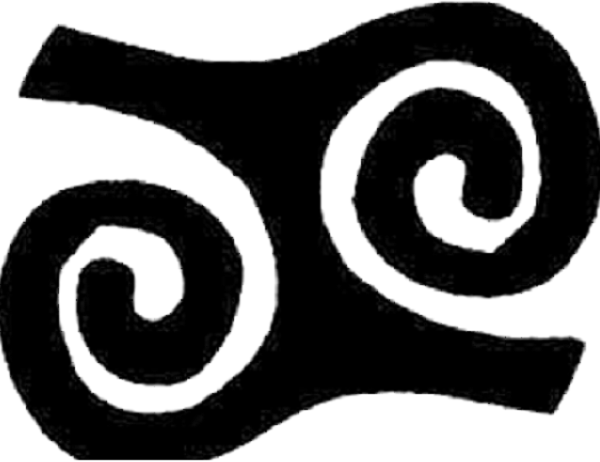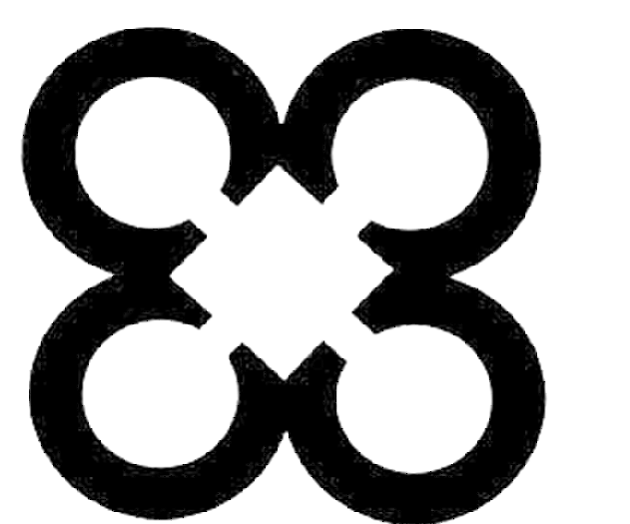
Adinkra symbols .A means of communication and expression of culture
Adinkra are visual symbols that represent concepts and maxims with deep traditional significance and which give expression to the tremendous intellectual prowess of the indigenous African before the advent of western education.
Advertisement
The varied Adinkra symbols espouse and highlight the philosophical underpinnings of African traditional cultural beliefs and practices including the existence and supremacy of God, unity in diversity as well as the concept of power and authority.

Origin and History
According to the Omanhene of the Suma Traditional Area in the Brong Ahafo Region, Odeneho (Dr) Affram Berempong III, the Adinkra symbols were invented by Nana Kwadwo Adinkra, a 19th Century King of the Gyaman Kingdom that straddled of the present day Brong Ahafo Region in Ghana and a section of the mid-western part of the Republic of Cote d’Ivoire.
Nana Adinkra was a charismatic and inspirational leader who ruled the Gyaman Kingdom during his time.
In many societies across the world, inventions and or creations of individuals are named after them. That is why we have names such as Ford, the automobile, ohms as a unit for measuring electric current and Suzuki among others.
It is in this vein that the Adinkra Symbols were named after Nana Kwadwo Adinkra who is said to have invented the symbols.

The King created the Adinkra symbols under inspiration as a means of communication and whenever the inspiration came upon him, he drew the symbol, named them and explained their meanings and significance to his paramount chiefs.
In turn, the paramount chiefs taught the youth and that helped to build a strong culture and unified the people to fight together to improve the lives of the citizens.
Other Trending Stories
Preservation of the Adinkra symbols
According to Odeneho Oberempong III, King Adinkra preserved the symbols by engraving them on gourds (dua toa) and later on when he had a golden stool; he caused the symbols to be engraved on the solid gold.
It was the Adinkra Golden Stool that resulted in the Asante-Gyaman War that was fought in 1818.
Types of Adinkra Symbols
The first ever Adinkra symbol that was created was Bi Nka Bi. This is an expression in the Bono dialect of the Akan language meaning bite not one another. It is said that the king engraved this symbol on a gourd at a village called Mina.

This village, which is now extinct, was located in the western part of the present day Suma Ahenkro, capital of the Suma Traditional Area.
Other known Adinkra symbols are Adinkrahene (Leadership), Akofena (Courage), Hwemudua (Critical Examination), Aya (Endurance), Akoma (Tolerance) and Asase Ye Duru (Divinity).
Others are Ananse Ntontan (Creativity), Bese Saka (Affluence) Akoben (Vigilance), and Mpuannum (Loyalty) and Gye Nyame (Supremacy of God).
According to oral traditions and documented narrations, Nana Adinkra used the Bi Nka Bi symbolism to quell a rancor that could have led to a civil war.
Adinkra Village Project
To rekindle the use of the Adinkra symbols in modern times, the Chiefs and people of the Suma Traditional Area have proposed the establishment of the Adinkra Village at Suma Ahenkro.
When completed, the village will not only preserve the memory of King Adinkra, but would also highlight cultural heritage as a tool for development.
In addition, an Adinkra Lecture series has been instituted to preserve the memory of King Adinkra and also enable Ghanaians to deliberate and brainstorm on how best to use the country’s cultural heritage for future development.




